6.2 Genetic Variation
So, what are the sources of genetic variation?
Genetic variation
Without genetic variation, some of the basic mechanisms of evolutionary change cannot operate. There are three primary sources of genetic variation, which we will learn more about:
- Mutations are changes in the DNA. A single mutation can have a large effect, but in many cases, evolutionary change is based on the accumulation of many mutations.
- Gene flow is any movement of genes from one population to another and is an important source of genetic variation.
- Sex can introduce new gene combinations into a population. This genetic shuffling is another important source of genetic variation.

Mutations
Mutation is a change in DNA, the hereditary material of life. An organism’s DNA affects how it looks, how it behaves, and its physiology — all aspects of its life. So a change in an organism’s DNA can cause changes in all aspects of its life.
Mutations are random
Mutations can be beneficial, neutral, or harmful for the organism, but mutations do not “try” to supply what the organism “needs.” In this respect, mutations are random — whether a particular mutation happens or not is unrelated to how useful that mutation would be.
Not all mutations matter to evolution
Since all cells in our body contain DNA, there are lots of places for mutations to occur; however, not all mutations matter for evolution. Somatic mutations occur in non-reproductive cells and won’t be passed onto offspring. For example, the yellow color on this tulip petal was caused by a somatic mutation. The seeds of this tulip do not carry the mutation.

The only mutations that matter to large-scale evolution are those that can be passed on to offspring. These occur in reproductive cells like eggs and sperm and are called germ line mutations. A single germ line mutation can have a range of effects:
- No change occurs in phenotype
Some mutations don’t have any noticeable effect on the phenotype (observable characteristics) of an organism. This can happen in many situations: perhaps the mutation occurs in a stretch of DNA with no function, or perhaps the mutation occurs in a protein-coding region, but ends up not affecting the amino acid sequence of the protein. - Small change occurs in phenotype
A single mutation caused this cat’s ears to curl backwards slightly.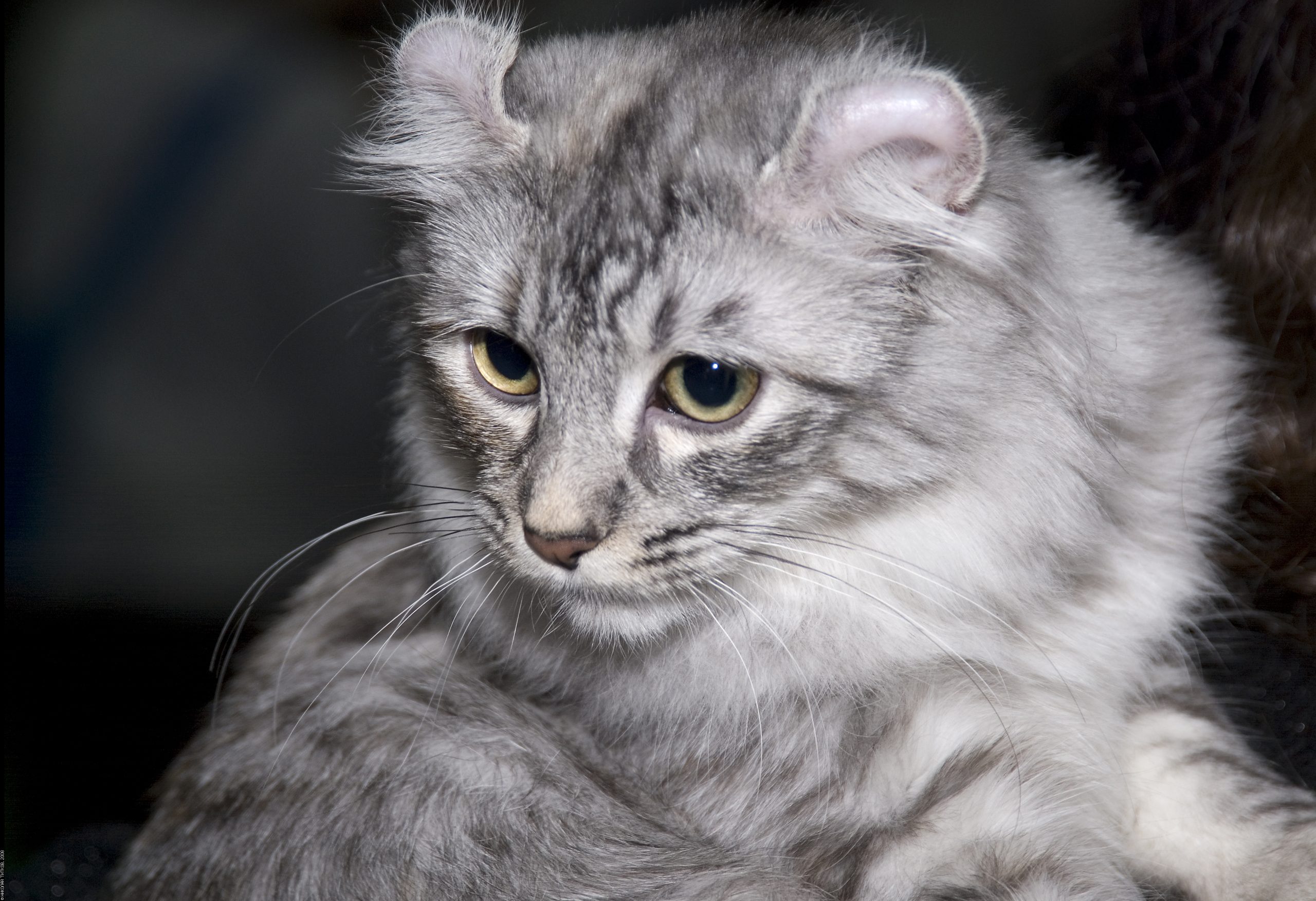
3. Big change occurs in phenotype
Some really important phenotypic changes, like DDT resistance in insects are sometimes caused by single mutations. A single mutation can also have strong negative effects for the organism. Mutations that cause the death of an organism are called lethals — and it doesn’t get more negative than that.
There are some sorts of changes that a single mutation, or even a lot of mutations, could not cause. Neither mutations nor wishful thinking will make pigs have wings; only pop culture could have created Teenage Mutant Ninja Turtles — mutations could not have done it.
The causes of mutations
Mutations happen for several reasons.
- DNA fails to copy accurately
Most of the mutations that we think matter to evolution are “naturally-occurring.” For example, when a cell divides, it makes a copy of its DNA — and sometimes the copy is not quite perfect. That small difference from the original DNA sequence is a mutation.
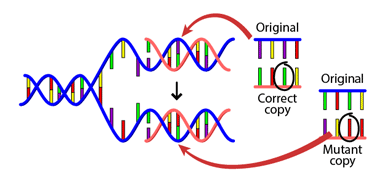
- External influences can create mutations

Mutations can also be caused by exposure to specific chemicals or radiation. These agents cause the DNA to break down. This is not necessarily unnatural — even in the most isolated and pristine environments, DNA breaks down. Nevertheless, when the cell repairs the DNA, it might not do a perfect job of the repair. So the cell would end up with DNA slightly different than the original DNA and hence, a mutation.
Gene flow
Gene flow — also called migration — is any movement of individuals, and/or the genetic material they carry, from one population to another. Gene flow includes lots of different kinds of events, such as pollen being blown to a new destination or people moving to new cities or countries. If gene versions are carried to a population where those gene versions previously did not exist, gene flow can be a very important source of genetic variation. In the graphic below, the gene version for brown coloration moves from one population to another.
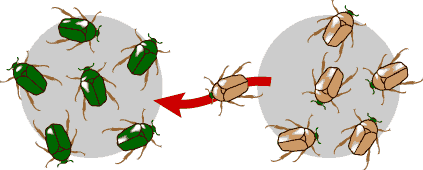
Sex and genetic shuffling
Sex can introduce new gene combinations into a population and is an important source of genetic variation.
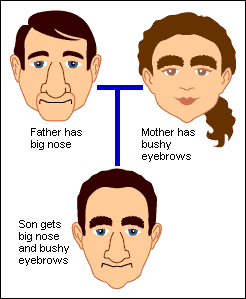
You probably know from experience that siblings are not genetically identical to their parents or to each other (except, of course, for identical twins). That’s because when organisms reproduce sexually, some genetic “shuffling” occurs, bringing together new combinations of genes. For example, you might have bushy eyebrows and a big nose since your mom had genes associated with bushy eyebrows and your dad had genes associated with a big nose. These combinations can be good, bad, or neutral. If your spouse is wild about the bushy eyebrows/big nose combination, you were lucky and hit on a winning combination!
This shuffling is important for evolution because it can introduce new combinations of genes every generation. However, it can also break up “good” combinations of genes.
Development
Development is the process through which an embryo becomes an adult organism and eventually dies. Through development, an organism’s genotype is expressed as a phenotype, exposing genes to the action of natural selection.
Studies of development are important to evolutionary biology for several reasons:
Explaining major evolutionary change
Changes in the genes controlling development can have major effects on the morphology of the adult organism. Because these effects are so significant, scientists suspect that changes in developmental genes have helped bring about large-scale evolutionary transformations. Developmental changes may help explain, for example, how some hoofed mammals evolved into ocean-dwellers, how water plants invaded the land, and how small, armored invertebrates evolved wings.
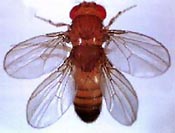 |
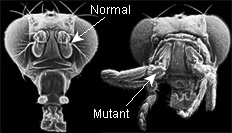 |
Learning about evolutionary history
An organism’s development may contain clues about its history that biologists can use to build evolutionary trees.
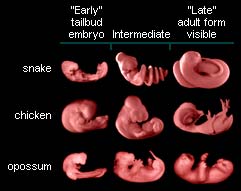
Limiting evolutionary change
Developmental processes may constrain evolution, preventing certain characters from evolving in certain lineages. For example, development may help explain why there are no truly six-fingered tetrapods.
Genetic drift
Genetic drift — along with natural selection, mutation, and migration — is one of the basic mechanisms of evolution.
In each generation, some individuals may, just by chance, leave behind a few more descendants (and genes, of course!) than other individuals. The genes of the next generation will be the genes of the “lucky” individuals, not necessarily the healthier or “better” individuals. That, in a nutshell, is genetic drift. It happens to ALL populations — there’s no avoiding the vagaries of chance.
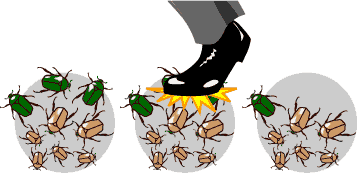
Earlier we used this hypothetical cartoon. Genetic drift affects the genetic makeup of the population but, unlike natural selection, through an entirely random process. So although genetic drift is a mechanism of evolution, it doesn’t work to produce adaptations.
Attribution:
This section is cloned from Environmental Biology, by Matthew R. Fisher, Oregon Coast Community College, published using Pressbooks, under a CC BY (Attribution) license. It may differ from the original.
Media Attributions
- Darwin_Hybrid_Tulip_Mutation_2014-05-01 (1)
- ACL Pointocurl Fiorentina
- BMW_i3_01-scaled-1-1
- COP_Paris_Accord-1
